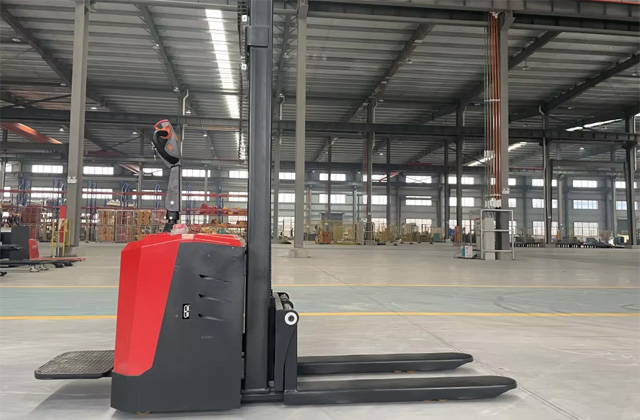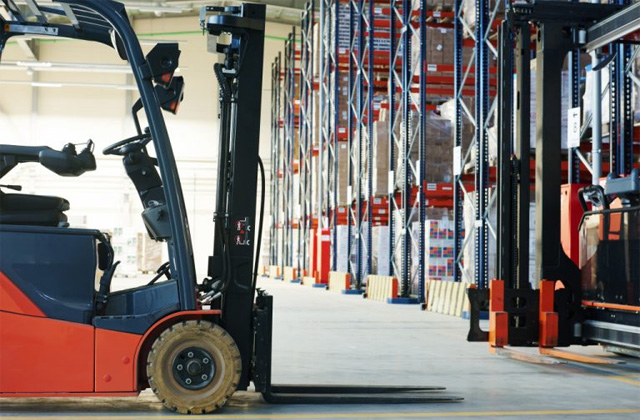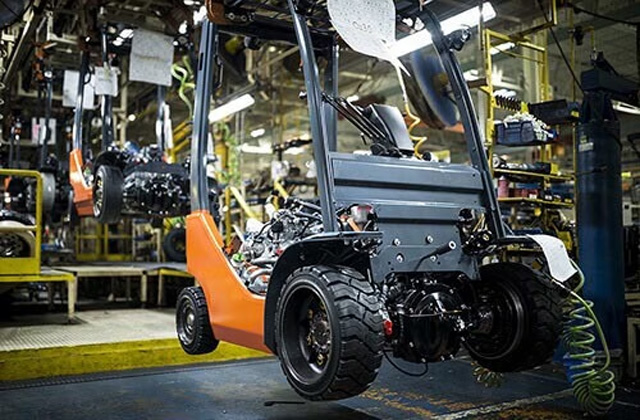In today's highly competitive industrial logistics field, a revolution led by "electric drive" is quietly changing the ecology of the stacker industry. Electric stackers, as an important equipment for upgrading warehouse handling automation, not only improve operational efficiency, but also bring about a dual leap in environmental protection and intelligence. In this transformation, whoever can master the core of manufacturing, accurately get close to customers, and lead the market with innovation will stand out in this fast-growing track.

1. The "past and present" of electric stackers: from machinery to intelligence
Before entering the electric era, stackers relied more on internal combustion drive or manual propulsion, which not only had high emissions and loud noise, but also caused fatigue in operation and complex maintenance. As concepts such as green energy and intelligent manufacturing gradually landed, electric stackers came into being.
Its development can be divided into three stages:
1. The first generation of electric stacker: replacing manual and internal combustion to achieve basic electric handling functions;
2. The second generation of intelligent stacker: integrating hydraulic automatic control, electromagnetic braking and human-machine interaction interface;
3. The third generation of intelligent networked stacker: connecting to WMS (warehouse management system), supporting remote scheduling, and having self-diagnosis function.
Today's electric stacker is no longer just a light version of the "electric forklift", but an indispensable node device in the intelligent warehousing system.
2. Manufacturer standard analysis: Who is a qualified electric stacker manufacturer?
Not all companies that produce electric stackers can be called "manufacturers" - let alone "professional manufacturers". To judge the professionalism of electric stacker manufacturers, at least the following dimensions should be considered:
1. Technology accumulation and R&D strength
A truly powerful electric stacker manufacturer must have an independent technology R&D system, not just assembly. High-level manufacturers have independent R&D capabilities from chassis, battery management system (BMS), drive motor to whole machine collaborative control.
2. Industrial design and safety standards
Electric stackers are key equipment for "heavy-duty work scenarios", and safety always comes first. Professional manufacturers must ensure that the equipment has passed multiple international or domestic certifications such as ISO3691, CE, GB/T 6105, and adopts ergonomically designed cockpits and control handles.
3. Production scale and degree of automation
Manufacturers with intelligent manufacturing capabilities can often achieve highly automated assembly lines, such as laser cutting, electrophoretic coating, automatic welding arms and other equipment to ensure that the quality of each stacker is stable and the error is controllable.
4. Quality control system and after-sales network
Quality control is not just "pre-factory inspection", but a closed loop of the entire process from incoming material quality inspection to whole machine debugging to simulated working condition testing. The after-sales system determines whether the equipment can achieve "minute-level response" at the customer's site.
3. Applicable scenarios of different types of electric stackers
Electric stackers are not "stereotyped", but are divided into several categories according to the type of goods, stacking requirements, channel width and other requirements:
Walking stackers are flexible to operate and economical and practical
Stand-on stackers are efficient and suitable for medium and long distance transportation
Forward-moving stackers can move the fork forward to improve the stacking capacity
All-electric stackers do not require manual operation and are intelligently dispatched
These rich product forms are not only a reflection of the manufacturer's R&D capabilities, but also determine whether the company can serve a diverse customer base.
4. Depth of industry application: How electric stackers "change the world"
In many industries such as modern manufacturing, logistics, e-commerce, food cold chain, and pharmaceutical warehousing, electric stackers have become "high-frequency equipment".
Manufacturing: Assisting the internal turnover from raw materials to finished products, and improving the efficiency of line-side material distribution;
E-commerce warehouse: Complete high-density picking and stacking in a short period of time to cope with the surge in orders during promotions;
Pharmaceutical industry: Medical warehousing has high requirements for cleanliness and quietness, and electric stackers are an ideal solution;
Cold chain warehousing: Operating in an environment below -25°C tests the stability of the manufacturer's electronic control system.
These cases show that electric stackers are not "cargo moving machines" but the smart engine of modern warehousing and logistics.
5. Shuangchao Machinery: Deeply cultivating technology for 20 years, intelligently creating the pioneer of electric stacking in the future
In the electric stacker industry, "Shuangchao Machinery" is an unavoidable name. This high-tech enterprise, which has been deeply engaged in industrial vehicle manufacturing for more than 20 years, has created a series of intelligent, efficient and safe electric stacker products with the core concept of "technology as the backbone, quality as the soul, and customer-oriented".
Why choose Shuangchao Machinery?
1. Technical hard core: Shuangchao's independently developed electronic control system has higher adaptability in complex environments;
2. Fine process: Each device undergoes 72 hours of high-intensity load testing before leaving the factory;
3. Quick response: There are many after-sales service points across the country, and accessories can be reached within 24 hours;
4. Green and low-carbon: All Shuangchao stacking models have passed the national energy-saving product certification;
5. Customer customization: Support non-standard customized solutions to adapt to the special working environment of the enterprise.
6. Future trends: Innovation map of electric stacker manufacturers
With the intervention of AI, 5G, and edge computing, electric stackers will develop in a more intelligent and unmanned direction in the future. The following trends are worth paying attention to:
1. Unmanned stacker trucks (AGV stacker trucks) will be able to work in collaboration with warehouse robots;
2. Edge intelligent perception technology will improve path planning and obstacle avoidance capabilities in complex environments;
3. Digital twin technology will be used to remotely monitor equipment health and scheduling efficiency;
4. Modular design will greatly improve after-sales service efficiency and customer secondary development capabilities;
5. Green energy substitution will introduce new power systems such as supercapacitors and hydrogen energy.
In such a future, electric stacker truck manufacturers that truly have a technical core will play a key role in the reshaping of the global supply chain.
7. Choice is more important than effort, and choosing a professional manufacturer is a long-term guarantee
Electric stacker trucks are not just a type of "industrial vehicle", but a component of a complete set of modern warehousing intelligent solutions. A high-quality manufacturer is not only a provider of equipment, but also a collaborator in your efficiency revolution.
If you are in a critical period of warehousing upgrades, intelligent handling, and green transformation, you may wish to learn more about Shuangchao Machinery. It not only manufactures electric stackers, but also helps companies reconstruct efficiency boundaries and future forms.
Electric drive, smart future. Choosing Shuangchao means choosing a new era of efficient, safe and sustainable logistics.


